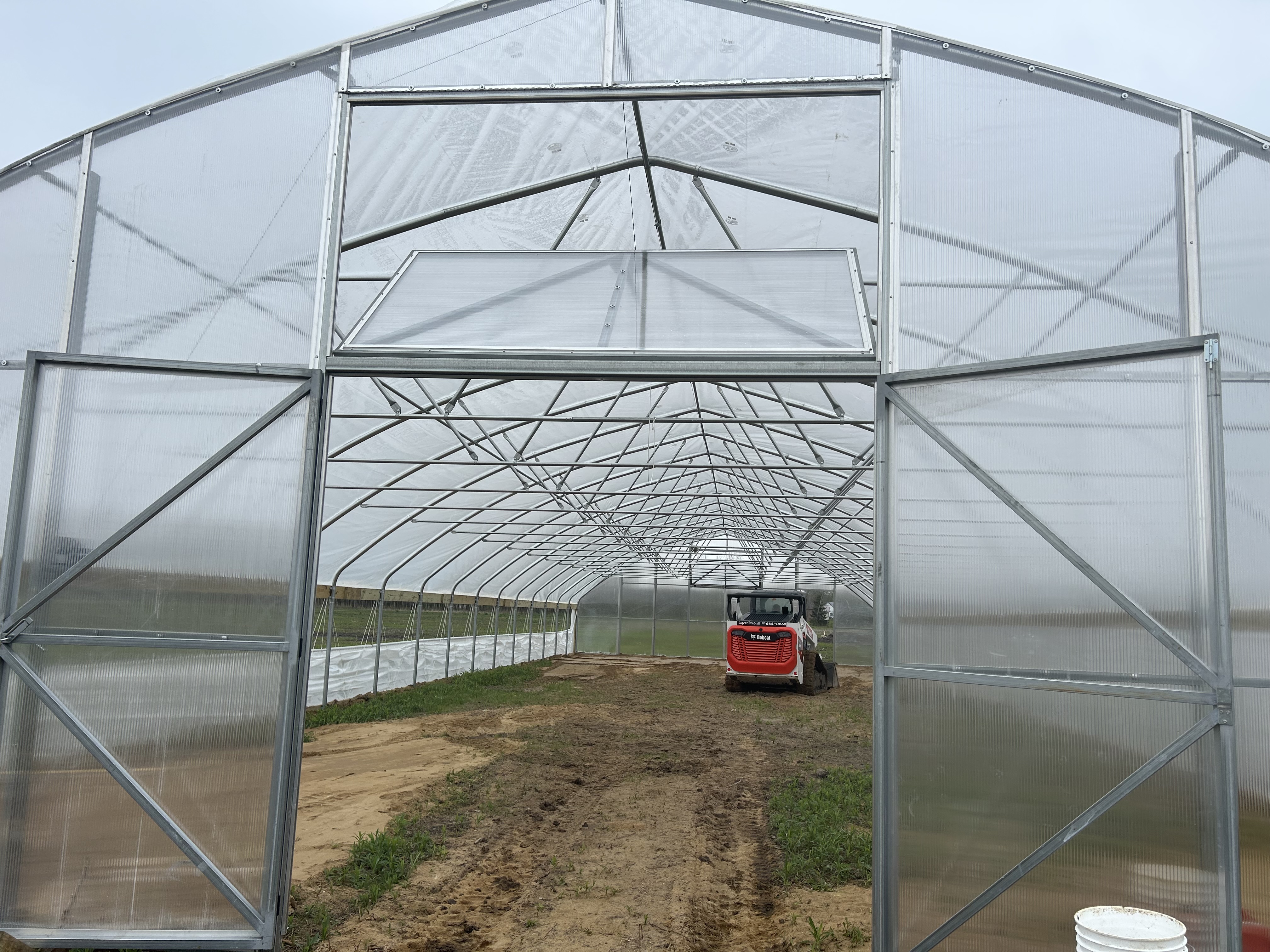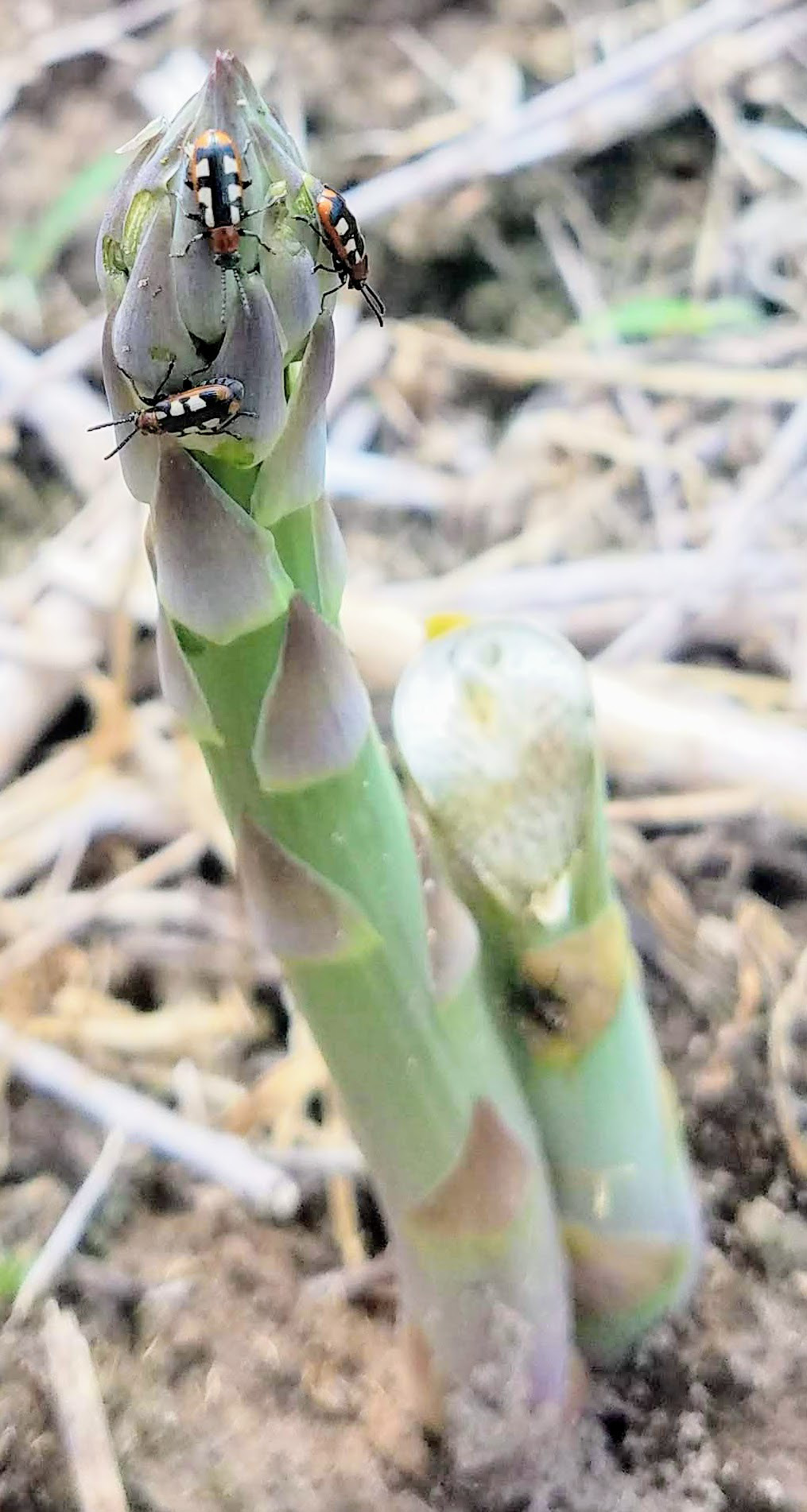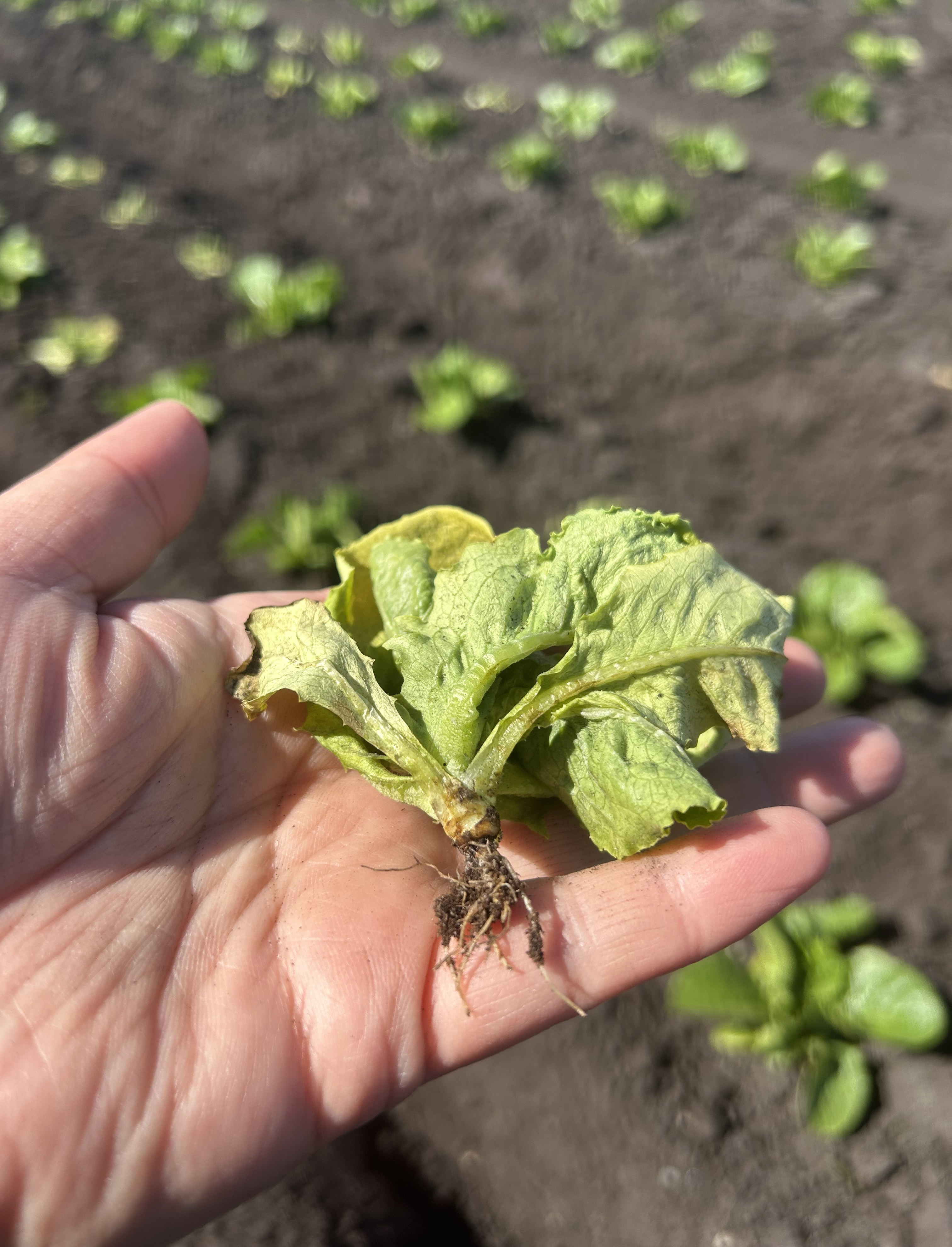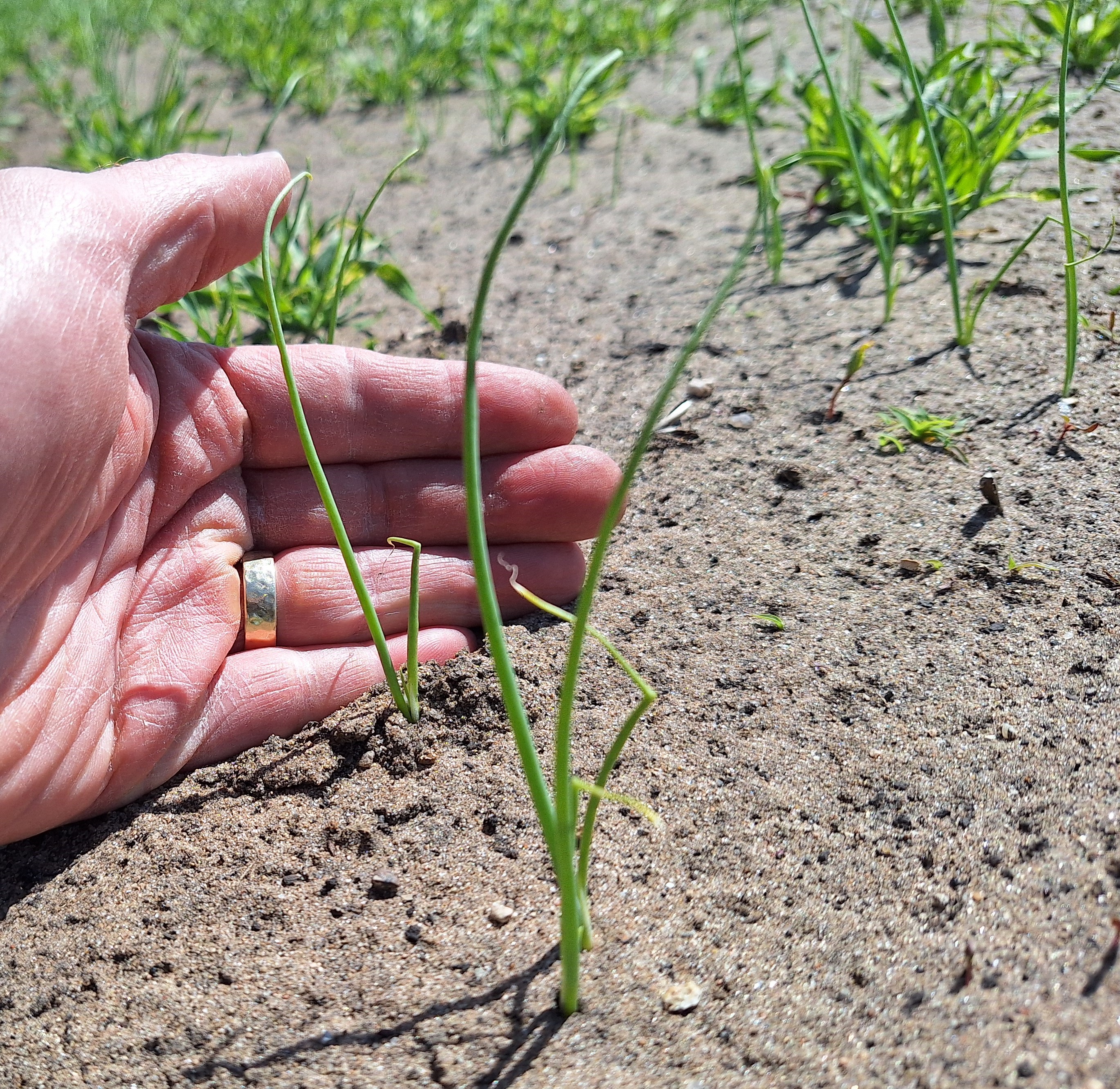Michigan vegetable crop report – May 14, 2025
Field season has started off a normal pace for many growers, without too many weather-related issues throwing off schedules.

Weather
This week’s forecast calls for precipitation totaling up to 1.5 inches through next Wednesday, May 21, with lighter rains this week and heavier rains mostly towards the end of that time range.
Partly to mostly cloudy with scattered showers and thundershowers are possible Wednesday, May 14, especially during the late afternoon and early evening. It’ll be a warm and dry Thursday during the day with showers and thunderstorms developing again Thursday night. Some strong storms are possible Thursday evening. It’ll be mostly sunny, dry and warm Friday. Showers will develop again overnight Friday into early Saturday. Cloudy and cooler this weekend into early next week. Rain possible again next Tuesday.
High temperatures from the mid-70s S to the low 80s in the northwest Wednesday, and 70s to low 80s Thursday and Friday, cooling back to the 50s in the north to 60s late this weekend. Low temperatures generally in the 50s through Friday, cooling to the 40s this weekend.
Medium range outlooks call for cooler and wetter than normal weather during the last week of May.
Spray tank cleanout
Residual herbicide left in boom ends, lines or tanks can cause issues down the line when making subsequent applications. Take 3 minutes to listen to some educational Canadians talk about sprayer rinsing procedures with some cool visuals or read more here.
Calibration
Spring time is the best opportunity to lock in your output rate with a range of machines, settings and products. When it comes to spreading granular fertilizer, some folks can’t mix their own blends and apply each ingredient separately. In this case, it can pay to calibrate each individual product you intend to spread because the flight dynamics of their particles are influenced by their shape, size, density and hardness. So, blending a custom mix is an attractive option, requiring only one calibration to dial in the effective swath width.
However, some of the same factors that influence flight also influence how well granules mix. For example, denser particles tend to work their way to the bottom in a blend, while larger particles tend to shake up to the top, which can result in an uneven application. Brittle, or soft particles can be ground into dust by the weight of other harder particles and agitation. Therefore, it can be useful to compare particle sizes, densities and hardnesses before making a blend.
Herbicide formulations
Recent changes to formulation of Roundup products sold for homeowner use are detailed in this recent publication by Erin Hill. The product still may be called Roundup but may now contain different active ingredients, which can cause confusion. Check it out to make sure you are using the proper product in the right area and use case.
Beginning farmer
If you are a beginning vegetable grower and have many questions, reach out to an educator in your region. You can also explore this beginning farmer curriculum, where you may find answers to many of your questions.

Crop updates
Asparagus
Monday’s warm daytime and overnight temperatures pushed asparagus into overdrive in west central Michigan after patchy freezes late last week.
Keep an eye out for asparagus beetles along field edges of known hotspots. Growers know where they have had problems before; the edges of those fields are the best place to check. Carbaryl and Assail (active ingredient acetamiprid) are both effective and have one-day preharvest intervals. This article on control just got updated based on the latest Michigan State University (MSU) research.

Purple spot can appear during harvest with the highest risk when extended rainfall is coupled with cool weather. Something to keep an eye out for in the week ahead depending on the forecast.
The cold weather late last week brought up a question for those with center pivots: Should I irrigate ahead of a freeze to get some freeze protection? This practice is most beneficial if soils are dry and irrigation is applied so soil is moist when the sun is out. As explained in the Michigan State University Extension article, “Should I irrigate ahead of the coming freeze?”, soil that has moisture in it can better absorb and transfer heat from the sun into the soil profile during the day and back upwards towards the surface and plant canopy at night.
Brassicas and greens
Brassicas of all kinds are being transplanted or direct seeded in the field. Lettuce is being planted out in the field. Cabbage white butterflies, also known as imported cabbageworm adults, are flitting around cabbage fields. Cabbage maggot has been observed feeding on plant stems along field edges.
We are still seeing wind damage on some crops that were affected in late April. Some crops showed delayed symptoms of wind damage, but wind and sandblasting have certainly been reported on transplants/seedlings and other crops.

Cucurbits
Cucumbers and summer squash are being planted outside. Melons and watermelons are being planted outside on black plastic.
In the world of vine crops, there are some genetic terms you may see in a seed catalog. We will define them and what it means for field arrangements and spacings.
Monoecious: A plant that makes both male and female flowers to ensure pollination. A profusion of male flowers usually emerge first, followed by a succession of female flowers, after which both types of flowers continue to emerge along the vine through the season. Temperature affects the ratio of male to female. Plant at typical density. No isolation required.
Gynoecious: A plant that makes predominantly female flowers, with some males. These plants tend to yield more fruit because they focus less energy on male flowers. Only a few pollen-bearing male flowers are needed to pollinate many females. Additionally, when purchasing a gynoecious variety, there is often a 5-15% addition of “sire” seed mixed in that is monoecious, ensuring there is a distribution of male flowers across the planting. Plant at typical density. No isolation required.
Parthenocarpic: A plant that will set fruit without pollination. Under average conditions, parthenocarpic cucumber and pickle varieties should not produce male flowers at all. When male flowers are not around, the fruit that is produced will be seedless. These varieties are not dependent on flower sex ratios and therefore will continue to produce fruit through temperature swings. This can be a desirable trait for some. Plant at half density. Isolation from gynoecious and monoecious varieties is recommended.
Some zucchini and summer squash varieties have parthenocarpic traits but still make male flowers. This can potentially help level out pickings when temperatures change the sex ratio of flowers, but this is not well understood.
Seedless: Can refer to a parthenocarpic pickle or cucumber, or to a triploid watermelon. Watermelons that have three copies of their chromosomes are called triploid, and when they are pollinated by a standard diploid variety, the mismatch in chromosome copies will make a fruit that is seedless. Plant at typical density. Requires one standard seeded diploid plant for every three or four seedless triploid plant. Also, seedless triploid watermelons can benefit from a separate, high-temperature seed-starting process from other vegetables.
There are two common ways to trellis high-tunnel cucumbers. One is the single-leader system where you are essentially pruning the plant as a single vine and trellising it vertically up a wire in similar fashion as you would manage indeterminate tomatoes. At each node on the main stem of the cucumber plant you will find a leaf, tendril, fruit and sucker. Pinch off the young sucker leaving the leaf, fruit and tendril intact and wind the main stem around your trellis string. Once the plant reaches wire or purlin where the vertical string is connected, you can either a) lower and lean the plant if you have excess trellis string to let out, or b) use the “umbrella method” where you leave a few suckers to become new leaders that are allowed to grow back downward. There are several variations on the umbrella method, find more information in this Penn State Publication.
The other main practice is training the vines up horticultural netting stretched horizontally, forming more of a wall of cucumber foliage. This does not typically require as much pruning and can be even more productive than a single-leader system. Check out this excellent high tunnel cucumber production guide from Purdue for more details and info on further topics.
Fruiting vegetables
Early planted greenhouse tomatoes are full of green fruit and flowers. Field plantings of tomatoes have begun in southern Michigan, on bare-ground and black plastic mulch. Eggplant and peppers have started to be transplanted out in the field on plastic mulch.
Twisting, constricted, stringy, bendy stems are what we call epinasty. Tomatoes are like canaries in a coal mine with their environmental sensitivities and show epinastic growth in response to many things. Abiotic causes of epinasty can be the result of several issues, but most are due a hormonal imbalance (internal or external) causing unrestricted/uneven growth.
Here are a few examples we have seen in the past:
- Exposure to synthetic auxin herbicides or plant growth regulators (PGRs).
- Spray tank contamination (field or greenhouse). If any pesticide applications have been made in the area (even outside the greenhouse) check to see if any herbicides or PGRs were sprayed previously with the same sprayer to rule out possible tank contamination. Minute amounts of some chemicals applied to a sensitive crop can result in significant damage.
- Drift (field or greenhouse). Herbicides or PGRs can move with wind or other air currents from neighboring areas to affect plants not originally intended. In some cases, these products, particularly synthetic auxin herbicides applied outdoors, can injure very sensitive plants (such as tomato) when they are applied miles away, with only a minute amount causing distortion.
- Volatilization (field). Some herbicides can be rereleased as vapors from applied surfaces shortly after application. Volatilization can be particularly problematic if the products are applied under low wind conditions with low cloud cover and/or in the evening or early in the morning. High temperatures at the time of application can also increase the chances of volatilization and is often cautioned on the label. Herbicides can then move with air currents to affect off-target plants. Some herbicides and formulations are more prone to volatilization than others.
- Temperature inversion (field). Under normal conditions, air cools and expands as it rises higher in the atmosphere. Occasionally, however, when there are calm winds, clear skies and/or long nights, the air near the ground can become cooler than the air higher in the atmosphere in what is called a temperature inversion. Temperature inversions are more common in the winter but can occur in any season. When herbicide applications are made during a temperature inversion fine herbicide droplets can persist in the warmer air mass and take longer to reach the surface, potentially traveling up to a few miles from the original application site during that settling time. Tree shadows (and structures) can cause temperature inversions to build up more quickly and dissipate more slowly.
- Internal buildup of ethylene. Ethylene is a plant hormone, it can be produced naturally by plants or synthetically for industrial purposes. In plants it can be produced as a signal of plant stress (e.g., root stress, air pollutant exposure, pathogen invasion). Anaerobic soil conditions and compaction are a couple examples of the type of root stress that has been observed to cause a rise in internal ethylene production resulting in symptoms in tomatoes. Internal ethylene production in response to stress is not fully understood at this time and is still the subject of research.
- Exposure to ethylene as air pollutant. Ethylene is one of the most widely produced organic compounds for industrial uses. It is also a pollutant from things like car exhaust, polyethylene production and natural gas leaks. Damage from industrial sources of ethylene has been noted greater than one mile from the source in cotton, according to Heck et al. 1970. Additional considerations for indoor exposure to ethylene are broken heat exchangers, heaters that are not vented or poorly vented, motorized equipment use inside (e.g., fork lift), and exposure to ripening fruit. In wood-heat hoophouses, wind can blow down uncapped flues and push combustion gases through any leaky joints in the firebox.
Onions and garlic
West Michigan onion growers had applied the first shot of Goaltender herbicide at the one-leaf stage as of late last week or were about to. Goaltender is labeled for application at the one-leaf stage at 4-6 fluid ounces per acre via a special local needs label.
Growers use multiple applications of Goaltender per season to keep on top of weeds. Note that applications spaced very close in time (e.g., within a few days) can be similar to a single, double-rate application from a crop safety perspective. It is kind of the same difference as drinking a six pack in one hour vs. a whole day.
Barely windbreaks were also being terminated with clethodim, sometimes applied with the Goaltender, and sometimes without (when onions were behind the barley).

Barley windbreaks help keep seed and small plants from literally being “blown away” but can set onions back if they are allowed to grow too long. One rule of thumb used by industry members is to terminate barley before it is 6 inches tall.
Sweet corn
Fields are being seeded continually now and transplants are being produced in the greenhouse. Sweet corn has emerged in early planted fields. Growers are optimistic about having sweet corn ready by late June.
Other crops
Peas and green beans are up. Rhubarb is being harvested, and some stalk damage has been observed in east Michigan, potentially from insect/slug feeding or sandblasting in strong wind. Potatoes are still being planted. There have been some incidents of tuber rot, likely bacterial, occurring in heavier fields after recent rains. Allowing seed pieces to heal and suberize for several days after cutting before you plant can help mitigate this. See the potato section of the Ontario Vegetable Production Guide for a nice write-up on preparing and handling seed pieces.
Produce Food Safety On-Farm Readiness Reviews
Schedule an On-Farm Readiness Review today for a two-hour educational visit that takes place during the harvest season and is meant to be casual and low stress. Everything discussed during an On-Farm Readiness Review is confidential and focuses on ways to reduce risks in relation to produce safety. There is no pressure to take our advice either, we are just here to support you in your produce safety efforts.
Events
- May 15, 5:30-8:30 p.m., Land Access Workshop for Beginning Farmers
- May 20, Otsego County Pesticide Applicator Training
- May 22, 5:30-8:30 p.m., Urban Agriculture and Policy Workshop for Beginning Farmers
- May 28, Oakland County Pesticide Applicator Training
- May 29, 5:30-8:30 p.m., Produce Safety Workshop for Beginning Farmers
- June 5, 5:30-8:30 p.m., Soil Health Workshop for Beginning Farmers
- June 12, 5:30-8:30 p.m., Integrated Pest Management Workshop for Beginning Farmers
- June 18 - 8:30 a.m.-12 p.m., Scouting School 2025 (Day 2)
- June 19, 5:30-8:30 p.m., Pollinator Workshop for Beginning Farmers
- June 26, 5:30-8:30 p.m., Farm Financial Management Workshop for Beginning Farmers
- July 16 - 8:30 a.m.-12 p.m., Scouting School 2025 (Day 3)
- July 30, Edible Flint Food Garden Tour
- August 5, 12-1 p.m., Seed Treatment Webinar Series
- August 12, 12-1 p.m., Seed Treatment Webinar Series
- August 18 – 19, Northern Michigan Small Farm Conference
- August 19, 12-1 p.m., Seed Treatment Webinar Series
- August 26, 12-1 p.m., Seed Treatment Webinar Series
This work is supported by the Crop Protection and Pest Management Program [grant no 2024-70006-43569] from the USDA National Institute of Food and Agriculture. Any opinions, findings, conclusions, or recommendations expressed in this publication are those of the author(s) and do not necessarily reflect the view of the U.S. Department of Agriculture.



 Print
Print Email
Email




